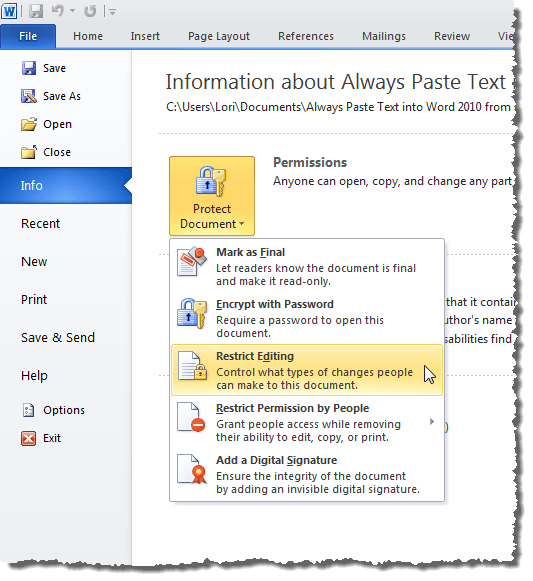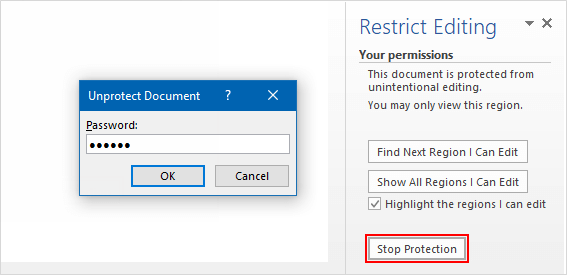
When you try to open the password protected file, a password window will appear.ĥ. The info section will now show that a password is required to open the file.Ĥ. Again, it is important to remember that if you lose or forget the password, it cannot be recovered. Enter your password, and then reenter it in the next screen.
 In Microsoft PowerPoint, click Protect Presentation and then choose Encrypt with Password. In Microsoft Word, click Protect Document and then click Encrypt with Password.
In Microsoft PowerPoint, click Protect Presentation and then choose Encrypt with Password. In Microsoft Word, click Protect Document and then click Encrypt with Password.  In Microsoft Excel, click Protect Workbook and then choose Encrypt with Password. To password protect your file, first open it, and then click the File tab and then click Info. Microsoft Office programs all have the ability to encrypt a file with a password for protection. Password protection does not prevent a file from being moved, copied, renamed, or deleted, only from being viewed or edited. Information Technology will not be able to help you get into a file where the password does not work.
In Microsoft Excel, click Protect Workbook and then choose Encrypt with Password. To password protect your file, first open it, and then click the File tab and then click Info. Microsoft Office programs all have the ability to encrypt a file with a password for protection. Password protection does not prevent a file from being moved, copied, renamed, or deleted, only from being viewed or edited. Information Technology will not be able to help you get into a file where the password does not work. 
If you forget the password to the document, there is no way to recover the password or otherwise open the file. You will want to choose a password you can remember.
 You will want to choose a secure password, using multiple characters and a mix of upper and lowercase letters and numbers. Some important things to note when password protecting a file: When a password protected document or file is opened, you must enter the password in order to view or edit the document. Password protection, or encrypting your files with a password, is a method of securing your documents to make sure that only you and those who have been provided the password are able to view or edit a document. This guide covers how to password protect your files in Microsoft Office.
You will want to choose a secure password, using multiple characters and a mix of upper and lowercase letters and numbers. Some important things to note when password protecting a file: When a password protected document or file is opened, you must enter the password in order to view or edit the document. Password protection, or encrypting your files with a password, is a method of securing your documents to make sure that only you and those who have been provided the password are able to view or edit a document. This guide covers how to password protect your files in Microsoft Office.








 0 kommentar(er)
0 kommentar(er)
